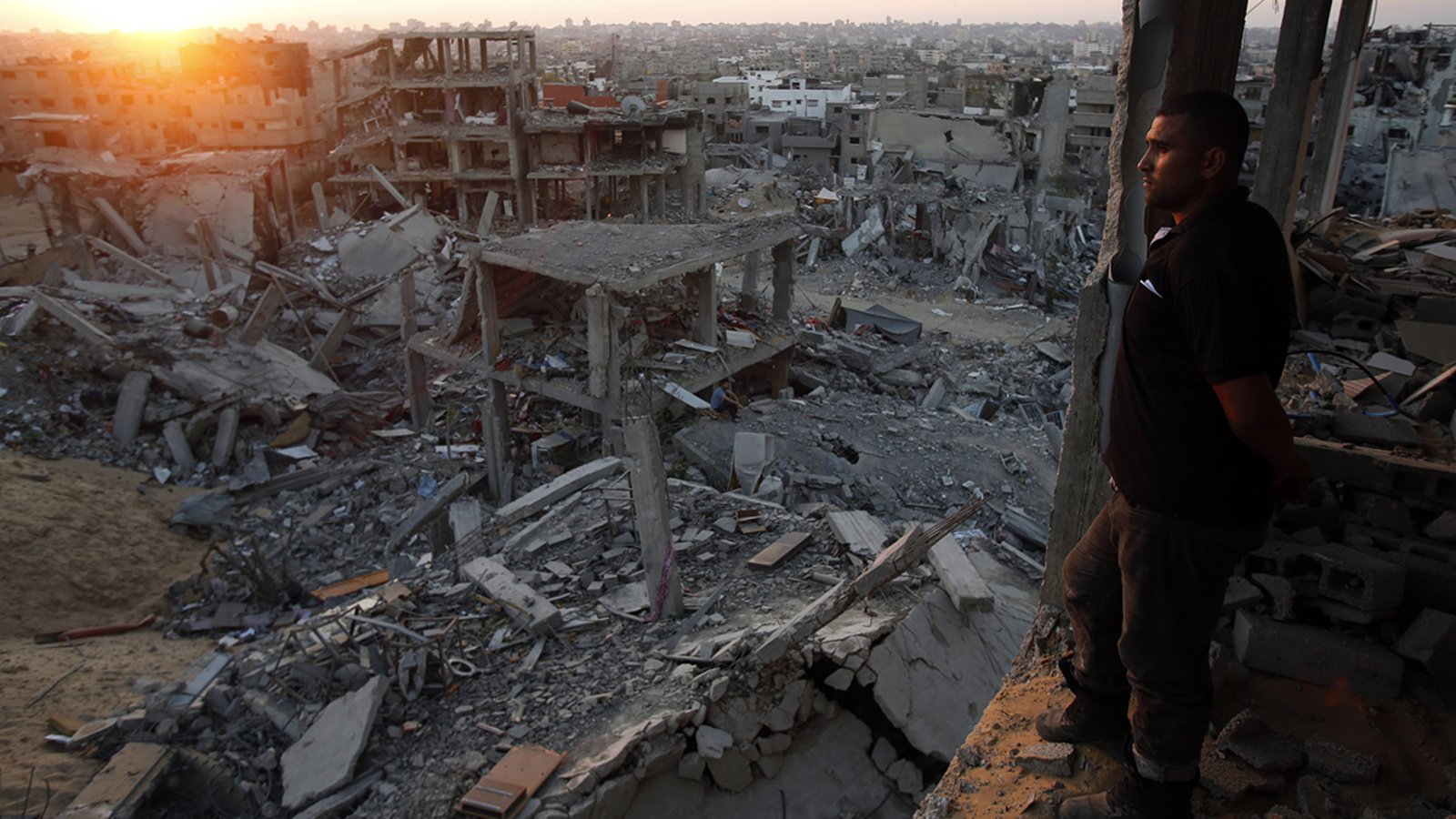Report on Health Losses Attributed to Anthropogenic Climate Change and Implications for Sustainable Development Goals
Introduction: A Public Health Emergency Impeding SDG 3
Attribution science has established a clear causal link between anthropogenic climate change and significant global health crises, including death, disability, and illness. This evidence underscores the climate crisis as a public health emergency, directly threatening the achievement of Sustainable Development Goal 3 (Good Health and Well-being). However, a disproportionate focus on high-income nations and a narrow range of health outcomes has obscured the full global burden, hindering the urgent policy response required to meet the targets of SDG 13 (Climate Action).
I. Quantifying the Health Burden of Climate Change
A. The Role of End-to-End Impact Attribution
Scientific consensus confirms that anthropogenic influences are responsible for approximately +1.3°C of global warming above preindustrial levels. End-to-end impact attribution studies provide the most rigorous evidence of the consequences, quantitatively isolating the health impacts of human-caused climate change from natural climate variability. Although a nascent field, these studies consistently report substantial negative health outcomes.
B. Primary Findings: Mortality and Morbidity
The primary focus of attribution research has been on quantifying the most severe health outcomes, with findings that directly challenge the progress of SDG 3.
- Heat-Related Mortality: Studies have quantified deaths attributable to climate change during specific heatwaves, ranging from 10 deaths in London (2006) to thousands across broader regions, such as the 271,656 deaths estimated across 43 countries between 1991 and 2018.
- Extreme Weather Events: Mortality and illness resulting from extreme weather events, such as hurricanes and floods, have been directly linked to anthropogenic climate change.
- Diversifying Research Areas: Recent studies are expanding to include a wider range of health threats, including:
- The growing burden of mosquito-borne viral diseases like dengue and West Nile virus.
- Mortality from air pollution (PM2.5) caused by climate-driven wildfires.
- Population displacement due to catastrophic floods.
II. Disproportionate Impacts on Vulnerable Populations: A Challenge to SDG 5 and SDG 10
A. Specific Risks to Children and Mothers
Climate change exacts a particularly high toll on the most vulnerable, undermining goals for child survival and maternal health central to SDG 3.
- Neonatal and Child Mortality: Studies have identified attributable deaths among neonates and children due to rising temperatures.
- Preterm Births and Low Birth Weight: Heatwaves have been linked to an increased burden of preterm births, which carry lifelong risks of asthma, diabetes, and cognitive disabilities, impacting future economic potential and well-being.
- Childhood Diseases: Climate change has been shown to affect the prevalence of childhood malaria in Africa.
B. Gender and Age Inequalities
The impacts of climate change are not evenly distributed, exacerbating existing inequalities and posing a direct challenge to SDG 5 (Gender Equality) and SDG 10 (Reduced Inequalities). One study found that during a heatwave, women and the elderly accounted for 60% and 90% of attributable deaths, respectively, with older women facing mortality rates 1.8 times higher than the general population.
III. Economic and Legal Implications for Sustainable Development
A. Economic Costs as a Barrier to SDG 8
The monetized health losses from climate change represent a significant threat to SDG 8 (Decent Work and Economic Growth). Using the Value of Statistical Life (VSL) metric, estimates of annual losses are in the tens of billions of dollars, with some cumulative estimates approaching trillions.
- Annual adjusted losses from temperature-related neonatal deaths in 29 low- and middle-income countries are estimated at US$29.5 billion.
- Annual losses from global wildfire air pollution mortality are estimated at US$40.2 billion.
- The total loss from heat-related deaths across 43 countries (1991-2018) is equivalent to US$869.3 billion.
B. Source Attribution and Climate Justice (SDG 16)
Source attribution science, which links health impacts to the emissions of specific corporate entities, provides a powerful tool for advancing SDG 16 (Peace, Justice and Strong Institutions). By quantifying the deaths attributable to major fossil fuel companies, this research can supply critical evidence for climate litigation and inform international negotiations on loss and damage, promoting accountability and justice.
IV. Addressing Gaps and Inequities in Global Health Research
A. Critical Research Gaps Threatening SDG 2 and SDG 3
Significant gaps remain in attribution research, leaving major climate-sensitive health risks unquantified. This lack of data hinders comprehensive policy-making and progress towards multiple SDGs.
- Food Insecurity and Malnutrition (SDG 2): Despite evidence that anthropogenic warming increases food insecurity, no studies have estimated the attributable mortality from malnutrition.
- Water-Borne Illnesses: The impact on diarrhoeal diseases remains unquantified.
- Non-Communicable and Mental Health: The attributable burden of conditions like heart disease, kidney disease, anxiety, and depression has not been assessed.
B. Geographical Bias and Institutional Inequality (SDG 10 & SDG 17)
The field of health impact attribution suffers from a profound geographical bias that undermines SDG 10 (Reduced Inequalities).
- Research is overwhelmingly focused on communities in high-income countries.
- Studies are almost entirely led by institutions in the Global North, even when the subject is health impacts in the Global South.
This dynamic perpetuates inequitable systems of knowledge production and hinders the development of locally relevant solutions. Achieving a representative understanding of climate health impacts requires adherence to SDG 17 (Partnerships for the Goals) by increasing investment in research led by scientists and public health experts from communities on the frontlines of climate injustice.
V. Recommendations for Integrated Policy and Research
A. Policy and Governance
- Treat the climate crisis as a global public health emergency to accelerate progress on SDG 3.
- Integrate health impact attribution data into national climate policies and adaptation plans, as mandated by SDG 13.
- Utilize attribution evidence to strengthen the case for financing loss and damage mechanisms, promoting climate justice under SDG 16.
B. Future Research Priorities
- Systematically address research gaps, particularly concerning malnutrition, non-communicable diseases, and mental health.
- Prioritize studies that analyze the uneven impacts of climate change within populations to develop targeted interventions that advance SDG 5 and SDG 10.
- Foster equitable research partnerships by directing funding and support to institutions and researchers in the Global South, in line with the principles of SDG 17.
1. Which SDGs are addressed or connected to the issues highlighted in the article?
The article on health losses attributed to anthropogenic climate change addresses several Sustainable Development Goals (SDGs). The analysis reveals connections to the following goals:
-
SDG 2: Zero Hunger
The article connects climate change to food security, noting that “one attribution study estimated that every 1 °C of anthropogenic warming has resulted in a 1–2% increase in food insecurity.” It also points out the lack of research on “attributable mortality from malnutrition,” directly linking climate impacts to the goals of ending hunger and malnutrition.
-
SDG 3: Good Health and Well-being
This is the central theme of the article. It extensively discusses how “climate change is responsible for substantial death, disability and illness.” Specific health impacts detailed include mortality from heat and extreme weather, the spread of infectious diseases like dengue and malaria, neonatal deaths, preterm births, and mortality from air pollution caused by wildfires. The article’s core purpose is to quantify these health burdens.
-
SDG 5: Gender Equality
The article highlights the disproportionate impact of climate change on women. It cites a study finding that “women and the elderly accounted for 60% and 90% of attributable heat-related deaths, respectively, with older women experiencing mortality at 1.8 times the rate of the general population.” This demonstrates how climate change exacerbates gender-based vulnerabilities.
-
SDG 8: Decent Work and Economic Growth
The economic consequences of climate-related health impacts are a significant focus. The article quantifies these losses, stating that “annual losses are also on the order of at least US$10 billion” and citing specific examples, such as the loss of “lifetime earnings associated with cognitive disabilities [from preterm births] could exceed US$1 billion per year.” These substantial economic damages directly threaten sustainable economic growth.
-
SDG 10: Reduced Inequalities
The article emphasizes the inequitable distribution of both climate change impacts and the research studying them. It states that health impact studies “have focused disproportionately on populations in high-income countries” and that research is “almost entirely led out of global north institutions—even when focused on health impacts in the global south.” This highlights the deep inequalities between and within countries in the context of the climate crisis.
-
SDG 13: Climate Action
This goal is the foundational context for the entire article. By providing “clear, quantitative estimates of historical and present-day impacts” of climate change on human health, the article underscores the urgency of taking action to mitigate climate change and adapt to its consequences. The call to “treat the climate crisis like a public health emergency” is a direct appeal for robust climate action.
-
SDG 16: Peace, Justice and Strong Institutions
The article touches upon the role of attribution science in legal and justice frameworks. It notes that “Source attribution studies are likely to have a unique relevance to legal actions against emitters and governments” and that such evidence can support “financing for loss and damage resulting from climate change.” This connects the scientific findings to mechanisms for justice and accountability.
2. What specific targets under those SDGs can be identified based on the article’s content?
Based on the issues discussed, several specific SDG targets are relevant:
-
Under SDG 3 (Good Health and Well-being):
- Target 3.2: End preventable deaths of newborns and children under 5 years of age. The article directly addresses this by discussing research on “heat-related child mortality in Africa” and “temperature-related neonatal deaths attributable to climate change.”
- Target 3.3: End the epidemics of… malaria and neglected tropical diseases… and combat… other communicable diseases. This is relevant as the article highlights “the growing burden of mosquito-borne viral diseases,” specifically mentioning studies on “dengue burden in the Americas and Asia” and “childhood malaria in Africa.”
- Target 3.4: Reduce by one third premature mortality from non-communicable diseases… and promote mental health and well-being. The article’s focus on “loss of life due to rising temperatures or extreme weather” relates to premature mortality. It also suggests future research should focus on “mental health, including anxiety, depression and suicides.”
- Target 3.9: Substantially reduce the number of deaths and illnesses from… air… pollution and contamination. This target is directly addressed through the discussion of “mortality due to air pollution from wildfires,” specifically from “global fine particulate matter (PM2.5).”
-
Under SDG 13 (Climate Action):
- Target 13.1: Strengthen resilience and adaptive capacity to climate-related hazards and natural disasters in all countries. The article’s detailed accounting of deaths and economic losses from “extreme weather events,” “heat waves,” and “floods” implicitly calls for strengthening resilience to these exact hazards.
-
Under SDG 10 (Reduced Inequalities):
- Target 10.2: By 2030, empower and promote the social, economic and political inclusion of all, irrespective of age, sex… or other status. The article provides evidence of the failure to achieve this, showing how climate impacts disproportionately harm vulnerable groups, such as “women and the elderly,” who experience higher mortality rates.
-
Under SDG 2 (Zero Hunger):
- Target 2.1: By 2030, end hunger and ensure access by all people… to safe, nutritious and sufficient food all year round. The article links climate change directly to this target by citing research that warming has led to a “1–2% increase in food insecurity.”
3. Are there any indicators mentioned or implied in the article that can be used to measure progress towards the identified targets?
Yes, the article mentions or implies several quantitative measures that align with official or potential SDG indicators:
-
Mortality Rates (Indicators 3.2.1, 3.2.2, 3.4.1, 3.9.1)
The article is replete with data on mortality, which is a primary indicator. It provides specific numbers that can be used to track progress, such as “271,656 deaths (associated with heat across 43 countries between 1991 and 2018)” and discusses “temperature-related neonatal deaths,” which directly relates to the Neonatal mortality rate (Indicator 3.2.2). The discussion of deaths from “PM2.5 air pollution from wildfires” corresponds to the Mortality rate attributed to… ambient air pollution (Indicator 3.9.1).
-
Disease Burden (Indicator 3.3.3)
The article discusses the burden of infectious diseases, which can be measured by incidence rates. For example, it mentions research on “childhood malaria,” which aligns with the Malaria incidence per 1,000 population (Indicator 3.3.3), and the “expanding dengue burden,” which could be measured similarly.
-
Deaths and Economic Losses from Disasters (Indicators 13.1.1, 1.5.1)
The article’s quantification of “loss of life due to rising temperatures or extreme weather” and “population displacement by floods” directly relates to Indicator 13.1.1 (Number of deaths, missing persons and directly affected persons attributed to disasters per 100,000 population). Furthermore, the extensive calculation of economic costs, such as “an average attributable loss of life valued at US$22.7 billion per year” from extreme weather, serves as a measure for this indicator.
-
Prevalence of Food Insecurity (Indicator 2.1.2)
The article explicitly cites a study that quantifies the impact of warming on food security: “a 1–2% increase in food insecurity.” This directly corresponds to Indicator 2.1.2 (Prevalence of moderate or severe food insecurity in the population).
-
Disaggregated Data on Vulnerable Groups
The article provides data that can be used for disaggregated indicators to measure inequality (relevant to SDG 5 and SDG 10). The finding that “older women experiencing mortality at 1.8 times the rate of the general population” is a powerful indicator of the unequal burden of climate impacts and can be used to track progress in protecting vulnerable populations.
4. Table of SDGs, Targets, and Indicators
| SDGs | Targets | Indicators Identified in the Article |
|---|---|---|
| SDG 2: Zero Hunger | 2.1: End hunger and ensure access to food. 2.2: End all forms of malnutrition. |
Prevalence of food insecurity (mentioned as a “1–2% increase” due to warming); Malnutrition and stunting (mentioned as impacts needing further study). |
| SDG 3: Good Health and Well-being | 3.2: End preventable deaths of newborns and children. 3.3: End epidemics of communicable diseases. 3.4: Reduce premature mortality from non-communicable diseases and promote mental health. 3.9: Reduce deaths from pollution. |
Neonatal and child mortality rates (specific studies on “neonatal deaths” and “child mortality” are cited); Incidence of malaria and dengue; Premature mortality from heatwaves and extreme weather; Suicide mortality rate (mentioned as a mental health impact); Mortality rate from air pollution (specifically “PM2.5 from wildfires”). |
| SDG 5: Gender Equality | 5.5: Ensure women’s full and effective participation and equal opportunities for leadership. (Implied: address vulnerabilities) | Disaggregated mortality data (women accounted for 60% of heat-related deaths, with older women dying at 1.8 times the general rate). |
| SDG 8: Decent Work and Economic Growth | 8.1: Sustain per capita economic growth. | Economic losses due to health impacts (quantified in billions of dollars, e.g., “US$869.3 billion” loss from heat-related deaths over a period); Loss of lifetime earnings. |
| SDG 10: Reduced Inequalities | 10.2: Promote inclusion of all, irrespective of age, sex, or economic status. | Disproportionate health impacts on vulnerable populations (women, elderly, children); Geographic disparity in research focus (Global North vs. Global South). |
| SDG 13: Climate Action | 13.1: Strengthen resilience to climate-related hazards. | Number of deaths and displaced persons attributed to disasters (quantified for heatwaves, floods, and extreme weather events). |
| SDG 16: Peace, Justice and Strong Institutions | 16.3: Promote the rule of law… and ensure equal access to justice. | Use of attribution science in legal actions against emitters; Data for “loss and damage” negotiations. |
Source: nature.com







